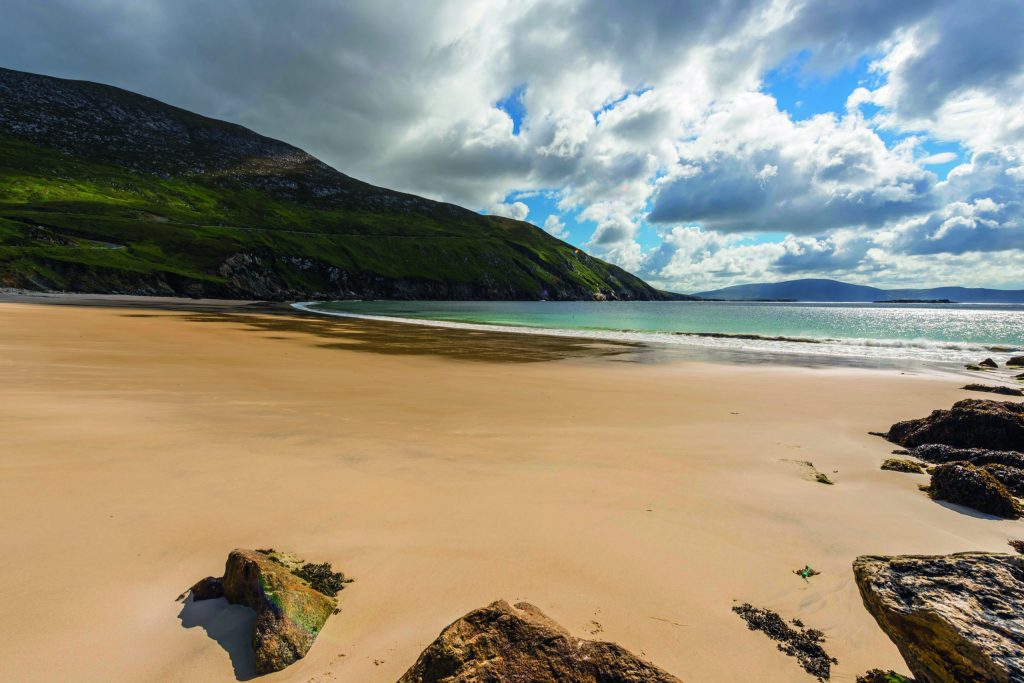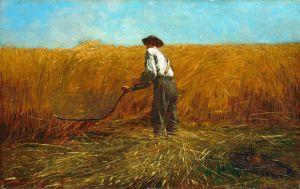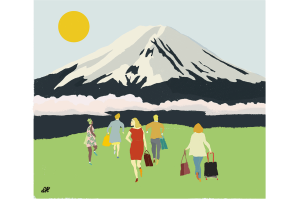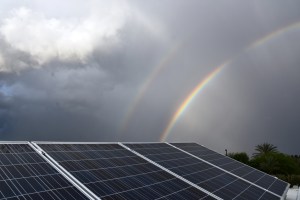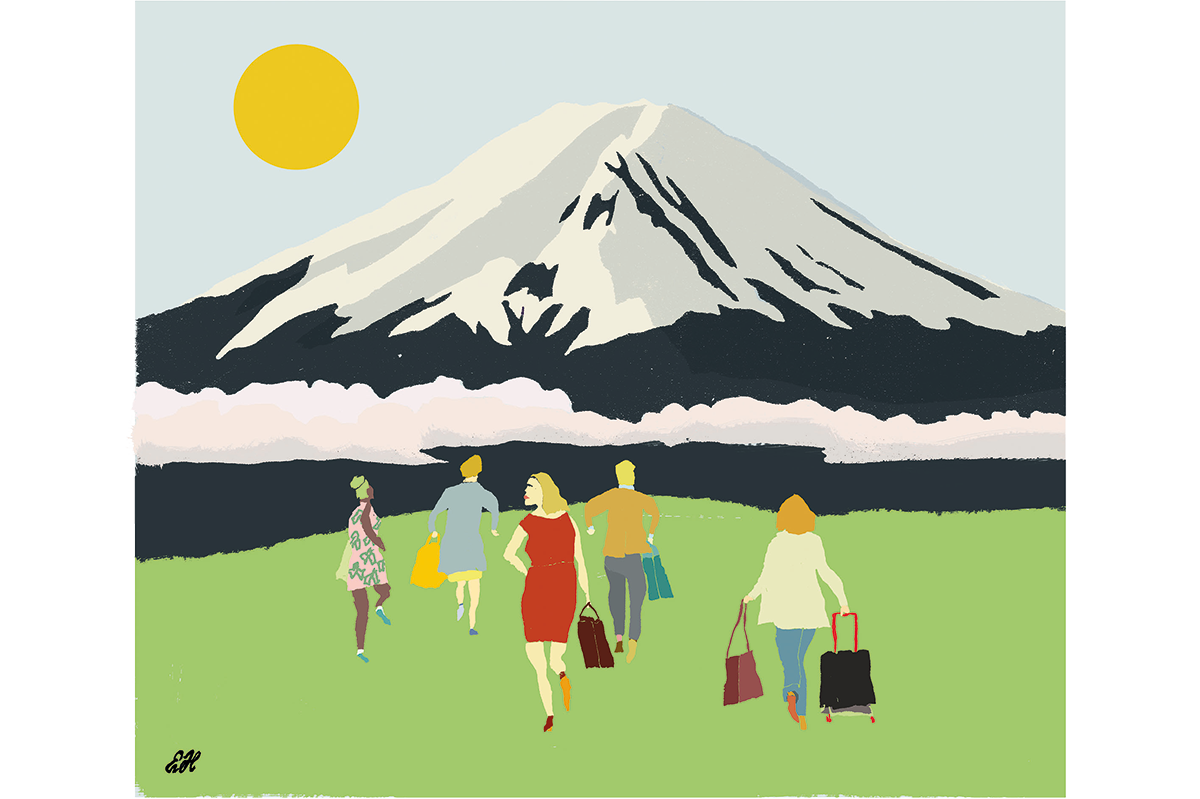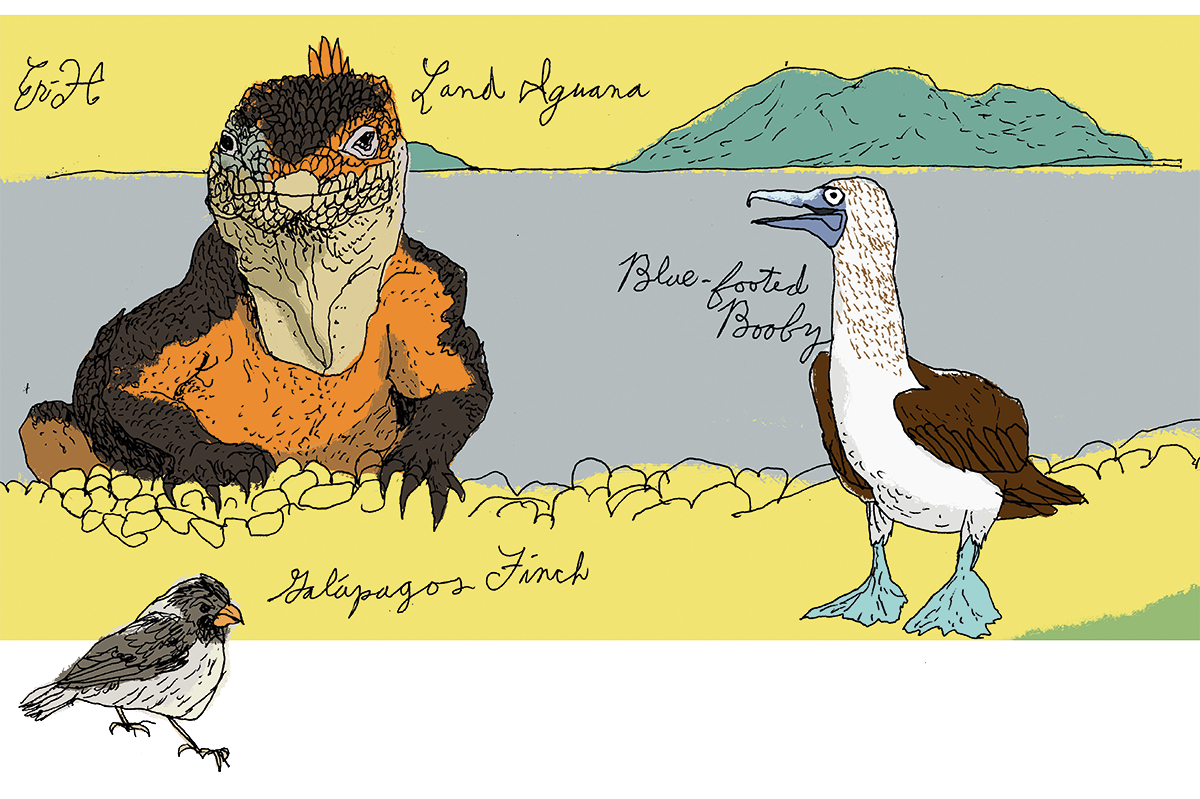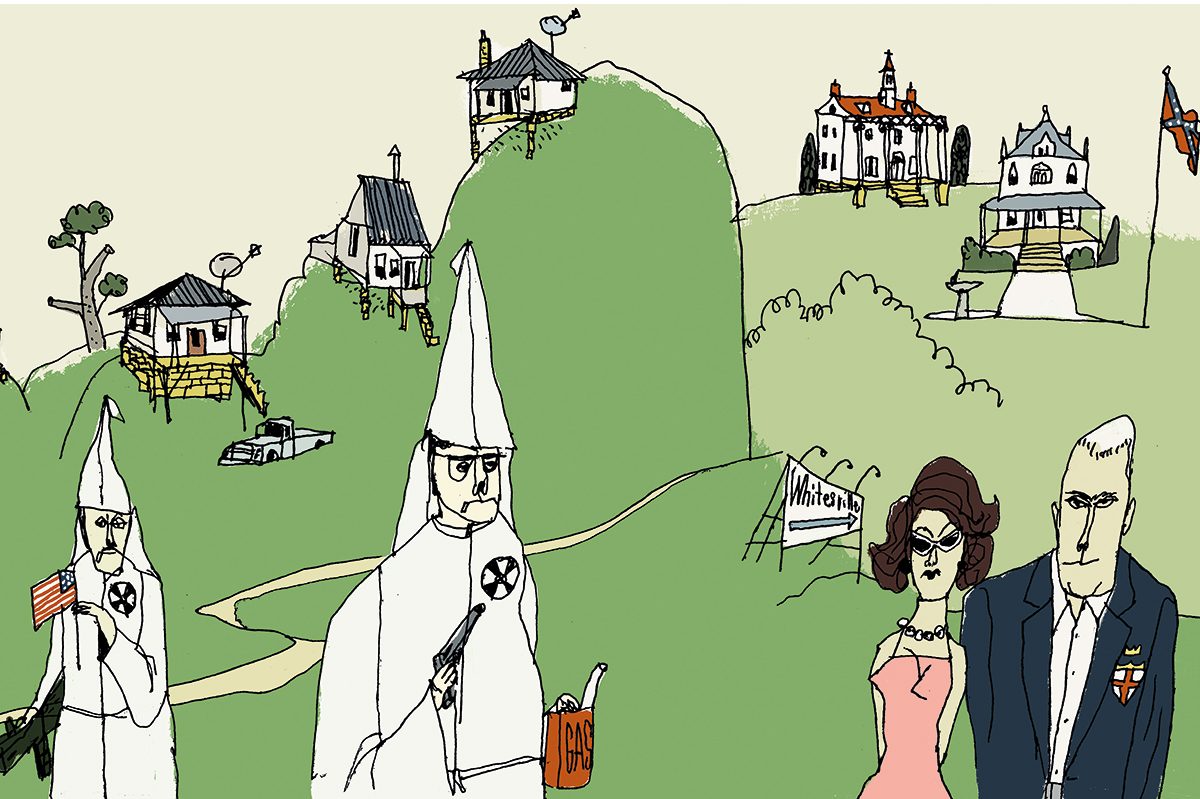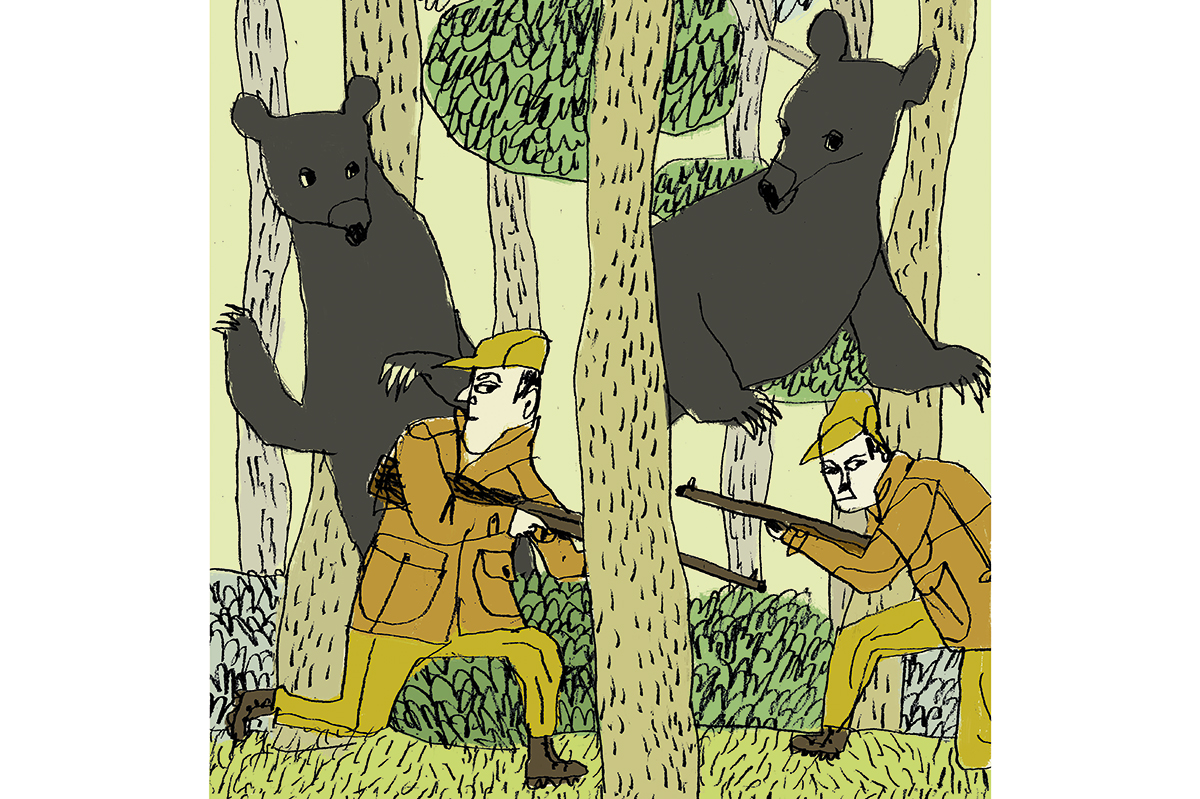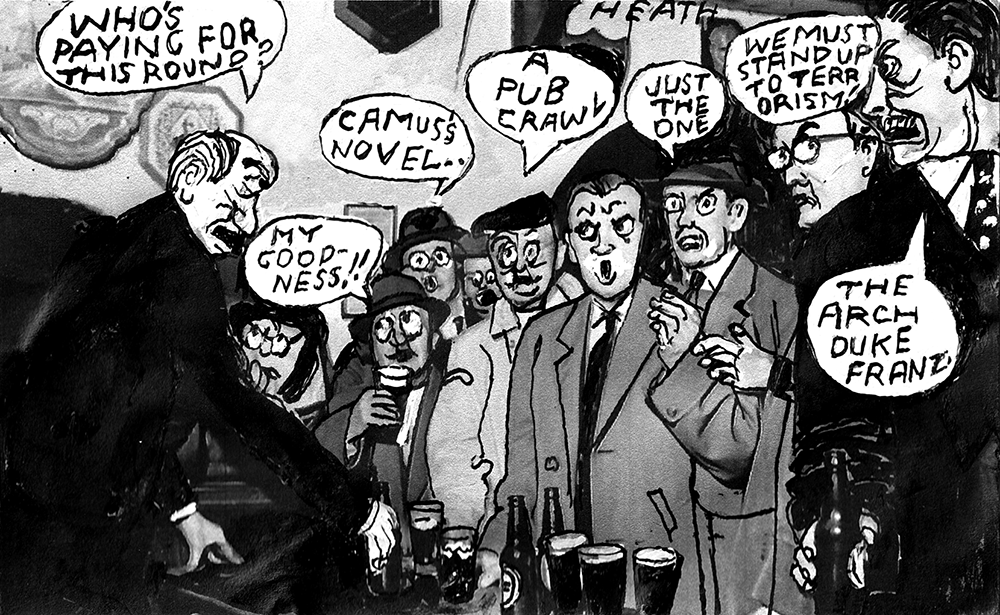It’s a nail-biting cliff-edge ride down switchback, stomach-churning, hairpin bends. When you finally reach sea level, the Atlantic wind may be so strong and the rain so sharp that you can barely stand on the crescent of sandy shore. The distant islands of Clew Bay — 365 of them to match the days in the year — are nothing more than blistery shapes in the sea mist and wave spray. Yet this nerve-wracking mountainous route is a journey worth making. Despite — or maybe because of — being far from the madding crowd on Achill Island, off the west coast of Ireland, Mayo’s Keem Bay has been voted one of the top 12 beaches in the world, beating contenders in Fiji, Hawaii and Bermuda.
Keem Bay looks as if it’s been scooped out of the surrounding steep hills and cliffs, like a giant ball of ice cream taken from a mountain-sized tub of Rocky Road. The actual road follows an old pathway, forged to reach the 19th-century coastguard station, now abandoned. It was paved in the 1960s and is little improved since. It twists around the side of a grassy mountain with black-faced mountain sheep wandering freely across it. It’s a 50-euro fine if you hit one coming around a tight curve.
In the summer months, there’s some respite from the southwest winds and Atlantic storms in the shelter of Moyteogue Head and Croaghaun mountain. Calmer weather brings in visitors. In July 2019, the road had to be closed because of the influx. But in the offseason months, the only living beings who share the pristine sand are gray seals and cormorants.
Keem Bay has long charmed. Graham Greene used to walk there from his cottage in the nearby village, Dooagh, after putting exactly 500 words of The Heart of the Matter (1948) on paper each morning. He said he was finished by 9:30 a.m. most days. The German Nobel Prize laureate Heinrich Böll, the author of The Lost Honor of Katharina Blum (1974), adopted the island as his home; his cottage is now a writer’s residence.
The artist Paul Henry (1876-1958) captured Keem in the ‘Launching the Currach’ (1910), now on display in the National Gallery, Dublin. This painting of fisherman taking out a traditional skin-covered boat was influential in forming early 20th-century views of the west of Ireland as a primitive place of romance populated by men of the soil. Henry had come on holiday with his wife, the Scottish painter Grace Mitchell, but, finding ‘Achill called to me as no other place had ever done’, tore up their return train tickets and threw them in to the sea. Much to Mitchell’s annoyance, the pair remained on the island for a decade. Over 30 years later, I arrived at this westerly point, hoping to find a temporary harbor from the London storm. I’m here still.
Each morning, I swim in the wild ocean, looking up from the water to count the sheep trotting down the winding road. The ocean is so clear, the seabed seems as if it’s bouncing back up toward me. Every grain of sand, lump of sandstone rock or clump of kelp is piercingly clear. But Keem hasn’t always been clean seas and fresh air. From the 1940s through to the 1970s, from April to June each year the bay wouldn’t be blue, but red. Basking sharks, attracted by the nearby warm waters of the Gulf Stream, were slaughtered in the bay, their blood turning the clear water crimson. From where the spotters stood up on Moyteogue Head, ready to shout that a shark was entering the bay, it would have looked like a bloody battlefield.
The men fished in traditional canvas-covered currachs using nets and harpoons. In 1955 — a good year — they caught 1,708 sharks. The oil from the sharks’ livers was extracted at a plant in the bay and exported around the world, including to the United States, as a fine-grade lubricant. Due to the shortage of oils after World War Two, shark oil was good business. In 1947 it fetched a record of £140 per ton. All that’s left of this thriving Keem industry is a noticeboard telling the tale of Achill Island Shark Fisheries Ltd with a few grisly black-and-white photos. Now when the basking sharks arrive each spring it’s a cause for celebration. We look out for and welcome them by taking photos on our iPhones.
Keem, as its recent best-beach accolade affirms, is just perfect as it is. Yet still there are misguided attempts to improve upon its unblemished beauty. The local Mayo Council and Bord Fáilte, the Irish tourism authority, have proposed blasting a path up the mountainside above the bay to create a ‘Signature Discovery Point’ with a glass walkway protruding over the cliff edge. The pathway would be lined with a series of 20-foot-high steel spikes, representing the slaughtered sharks. Within a week of making these plans public, a petition to prevent the development attracted over 12,000 signatures. The island has a winter population of around 1,500.
This isn’t the first time the islanders have organized a protest. In 1857, 25-year-old Charles Boycott arrived on Achill to oversee land claimed by the British. A brutal landlord, he fined tenants whose livestock strayed onto his land, geese were at risk of being run down by his horse if caught grazing on the roadway and fisherman were threatened when fishing in Keem Bay. Villagers refused to work for him or sell him their produce and ‘boycotting’ entered the English language. His sprawling home, Corrymore House, now a private residence, still stands on a hillside above the villages, looking down in fear and loathing.
Keem is Achill’s most westerly strand, one of four Blue Flag beaches on the island. The 15-by-11-mile island lies around three mountains — Slievemore, Minaun and Croaghaun (the highest at 2,257 feet) — with villages scattered low down by the shore. It sounds idyllic, but an island brings many challenges. With nothing between us and the American continent, the unbroken winter winds often bring down the overhead power cables, thrusting us into darkness. Last summer, there were so many visitors — the island is easily accessible by a land bridge — that the water ran out and we had to fill up jerrycans from public tanks.
Emigration has also ravaged Achill for centuries, from the Great Famine (1845-52) to the collapse of the Celtic Tiger in 2008. Evocative deserted stone villages, once heavily populated, dot the island. The largest is at the foot of Slievemore, not far from one of the many unexcavated Megalithic tombs. The lines of potato ridges, known locally as ‘lazy beds’, scar the hillsides where once thriving communities fed themselves. Separation, loss and grief are part of Achill’s oral history.
In one of the many pubs, you’ll still hear people recounting the story of a Royal Air Force plane from Belfast, out on a meteorological mission in 1950, crashing into the side of Croaghaun in the coastal fog. The villagers heard a bang but presumed it was just thunder or another mountain landslide. Martin Fadian was minding his sheep when he heard the explosion. When fisherman reported spotting a plane over Keem Bay, Fadian led a party up the mountainside in heavy rain and fog, discovering a propellor and eight bodies in the early hours of the morning.
You might also be told the tragic tale of the 1937 Kirkintilloch Disaster, when 10 young Achill men were burned alive in a bothy blaze while working as potato diggers in Scotland. The railway line, closed in 1934, was reopened to carry their bodies back to Achill. More recently, in the spring of 1951, a six-strong film crew arrived to shoot the docudrama Shark Island. Only two left the island alive. While they were filming off Keem Bay, a freak 26-foot wave struck and capsized the crew’s boat. Only the producer Hugh Falkus, a former Spitfire pilot, survived the wreck. The 21-year-old actress Claire Mullan also survived. Working on her first film, she had stayed ashore to look for calamine lotion for her windburn.
Today, summertime on Achill is rather like stepping into a 1950s postcard of holiday life. There are no hotels, only bed and breakfast establishments or self-catering Airbnbs. The island pleasures are simple — scrambling up a boggy hillside, getting sand between your toes on a windy beach, eating boxty (an Irish potato pancake) outdoors. There are no attractions to speak of apart from a one-room aquarium ambitiously called The Achill Experience, home to the rare blue lobster caught by a local fisherman. The reliably constant fierce wind has brought kitesurfers from France who opened a surfing hostel 10 years ago and, like many, haven’t left.
Beware: Achill is beguiling. Take the road to Keem and you face a risk greater than colliding with a stray sheep on the hairpin bends. You might end up, like the kitesurfers, Paul Henry and me, not turning back.
This article was originally published in The Spectator’s June 2021 World edition.



